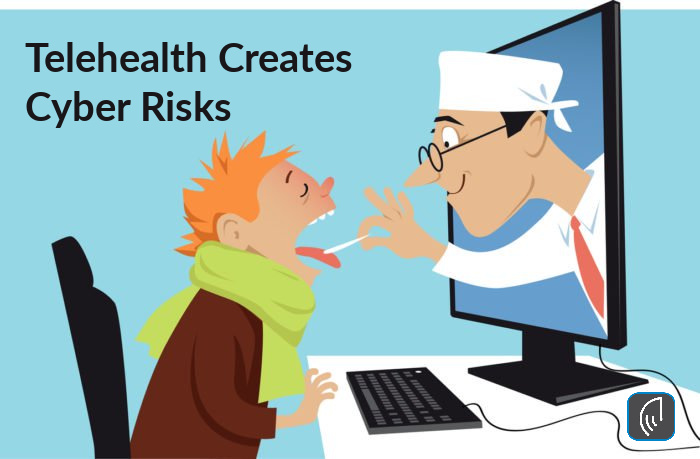Telehealth creates new cyber and medical id theft risks.
In follow up to the July 2, 2020 article titled “MEDICAL-ID THEFT RISKS INCREASE”. That article we said” we need to be more vigilant about cyber scams, phishing scams, hackers, and insider threats. The threats that are targeting our online presence – including telehealth services.
Based on the reader response and an article by HealthIT Security, Telehealth is the New Normal, But so is Online Fraud, we thought it appropriate to continue the discussion…
The COVID-19 pandemic has increased consumer risks through cyber scams and medical identity theft.
 Telehealth growth has exploded.
Telehealth growth has exploded.
HealthITSecurity, states “the U.S. telehealth market was estimated at ~$3 billion with 11% of consumers using telehealth in 2019. Fast forward to pandemic-plagued 2020, the telehealth market is poised to grow to $250 billion with 46% of consumers now using telehealth, according to McKinsey & Company.”
“Unfortunately,” and according to HealthITSecurity, “these benefits are being offset by a variety of fraud schemes where healthcare fraud in the US is approaching $300 billion annually and while the Department of Health & Human Services and the Centers for Medicare & Medicaid Services eased their telehealth requirements to serve more patients during the pandemic, there could be an inadvertent wave of billing fraud and risk patient safety.”
The fact is, the COVID-19 pandemic has cyber scammers, phishing scammers, hackers, and even the insider threat targeting healthcare professionals and consumers.
Examples of fraud scams, phishing scams, hacking, and insider threats include:
- Fraud scams including fake or fraudulent COVID-19 cures through fraudulent phone calls, fake social media content, and door-to-door sales.
- Phishing and Vishing Scams including fake emails, texts and phone calls to get you to share personal information like account numbers, Social Security numbers, or your login IDs and passwords.
- Hacking / Malware where hackers use malicious software such as viruses, worms, Trojan viruses, spyware, adware, and ransomware.
- Insider Threats including current and former employees. The careless worker, the disgruntled employee, the malicious insider, and the outside contractor or vendor can all be threats.
While Telehealth is an emerging opportunity with great potential, Telehealth Creates Cyber Risks that could lead to identity theft.
According to this April 13, 2020, Association of Certified Fraud Examiners (ACFE) blog, “as Telehealth services proliferate, telehealth fraud schemes will continue to evolve (please see here).
Consumers need to be aware that theft of or using your personal information can also originate with Telehealth services. (e.g., name, Social Security number, Medicare number, etc.)
Consumers can also reduce their risk of medical identity theft by safeguarding their health insurance cards, regularly reviewing credit reports, medical benefit explanations, medical bills, and prescription bills.
by Mark Pribish
Other Articles around COVID-19 and fraud:
- Health Care Schemes & COVID-19 Pandemic
- Fraud in the Midst of COVID-19
- Coronavirus Fear and Anxiety Drives Phishing Scams
- MEDICAL-ID THEFT RISKS INCREASE
